Things to do in Provence
Attractions in Provence are centred on interesting and picturesque villages with wonderful historical sightseeing opportunities. Baux de Provence is an ancient village with a ruined château that commands spectacular views over Provence to the Mediterranean sea. Châteauneuf-du-Pape is a medieval village dominated by the ruins of the ancient château that was once the Pope's summer retreat, and is also one of the best places to visit for wine tasting. Orange, an ancient Roman town, still boasts an astoundingly well-preserved Roman theatre and triumphal arch, and those who visit in summer can attend concerts at the ancient theatre.
Of course, the Provence landscapes are also breathtakingly beautiful and have famously inspired many artists. Saint Rémy de Provence is one of the most attractive towns in the region, which is saying something, and it is the setting for several paintings by Vincent van Gogh. The Sainte Victoire Mountain, just outside of Aix-en-Provence, inspired some of Cézanne's paintings, and has magnificent hiking trails.
Another glorious area for hiking, and kayaking, is the Verdon Canyon, where even just driving along the sheer gorge is breathtaking. A good base from which to explore this area is the charming village of Moustiers Sainte Marie.
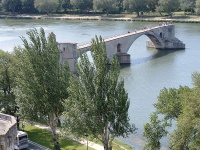
Avignon
Situated on the River Rhone, the historic holiday destination of Avignon is famed for being the Vatican of the 14th century. Six successive Popes resided here from 1309. Avignon is…
Avignon
Situated on the River Rhone, the historic holiday destination of Avignon is famed for being the Vatican of the 14th century. Six successive Popes resided here from 1309. Avignon is one of very few French cities to have preserved its ramparts. Within these walls, the UNESCO-listed city centre radiates out from the Place de l'Horloge, so named for the fortified tower on the square which now houses a clock and Jacquemert.
The park of Rocher des Doms offers panoramic views out over the city. Dominating the skyline is the enormous Gothic Palais des Papes, the seat of papal power in the 14th century. The Notre-Dame des Doms Cathedral supports a magnificent gold statue of the Virgin Mary. Also visible in the Petit Palais, a former cardinal's residence turned museum. The Pont d'Avignon clings proudly to its reputation as the world's most famous one-fifth-of-a-bridge.
Avignon nurtures a strong culture of art, drama and gastronomy. The covered market of Halles is adorned with a remarkable hanging garden. Visitors here are treated to more than 40 vendors selling specialties from the region, as well as daily cooking demonstrations. Those visiting in July will see the town transformed for the Festival d'Avignon, one of the biggest live performance events in the world.
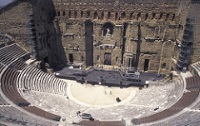
Orange
Just north of Avignon, Orange was the former seat of the Counts of Orange, a title created in the 8th century and passed to the Dutch crown in the 16th century. The family's most f…
Orange
Just north of Avignon, Orange was the former seat of the Counts of Orange, a title created in the 8th century and passed to the Dutch crown in the 16th century. The family's most famous member was Prince William, who ascended the English throne in 1689. Today the town is best known for its spectacular Roman theatre and triumphal arch, both of which remain remarkably intact.
The Roman Theatre is 2,000 years old and will leave visitors breathless with wonder; it truly is an amazing site to visit. They hold concerts here in summer. The rest of Orange isn't strikingly picturesque; however, there are pleasant tree-lined streets and squares with some nice cafes and restaurants and, delightfully, there is a small river, the Meyne, which runs lazily through part of the town, winding around buildings and gardens, which gives Orange a surprisingly pastoral feel.
It is also worth visiting the Colline St Eutrope park area, which runs across the big hill in Orange and is traversed by lovely paths that are perfect for a walk or jog. There is a fantastic view from parts of the hill, looking down on the Roman Theatre at the base.
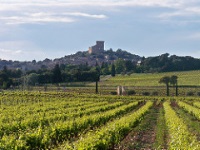
Châteauneuf-du-Pape
Châteauneuf-du-Pape is a medieval village on the side of a hill, dominated by the ruins of an ancient château towering above. The château was the pope's summer retreat from the …
Châteauneuf-du-Pape
Châteauneuf-du-Pape is a medieval village on the side of a hill, dominated by the ruins of an ancient château towering above. The château was the pope's summer retreat from the Palais and although all that remains are the foundations and two outer walls it is still an imposing sight and a wonderful viewpoint. The village below is a maze of well-restored medieval buildings and narrow streets that weave around the hillside, and it was once encircled by two concentric walls: the outer wall enclosed the chateau and the entire village, as far as the main road at the bottom of the village; the inner wall enclosed the chateau and only the highest part of the village.
Today life in the village often involves working in the surrounding vineyards or selling the famous wine to the many tourists who visit. The Chateauneuf-du-Pape AOC is one of the most renowned wines of the Loire Valley; the area is particularly famous for its red wine. Naturally, there are great wine tasting experiences to be had in the village and Les Caves Saint Charles (located in the Pope's Cellar, which dates back to the 13th century) is a favourite wine tasting venue with tourists. The Chateau la Nerthe is a picturesque vineyard that has lovely grounds and also hosts great wine tastings. Visitors will be spoiled for choice with vineyards and tastings, though.
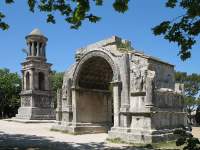
Saint Rémy de Provence
While it's a bit off the beaten path for most holidaymakers in France, St-Rémy de Provence is among the most attractive and interesting towns in Provence, and is well worth the 12…
Saint Rémy de Provence
While it's a bit off the beaten path for most holidaymakers in France, St-Rémy de Provence is among the most attractive and interesting towns in Provence, and is well worth the 12 mile (19km) journey from Avignon. The city centre has many beautiful buildings, including the Chapelle Notre-Dame de Pitié and the Hôtel Estrine.
Aside from the attractive town itself, St-Rémy is surrounded by beautiful countryside, which inspired many paintings by Vincent van Gogh. The artist lived in St-Rémy de Provence for a time, and the city has the somewhat dubious honour of being the place where he famously cut off his ear, after which he committed himself to the Monastère de St-Paul-de-Mausolée, an asylum that now offers visitors walking tours.
Vincent van Gogh is not the only famous resident of St-Rémy, however, as the city was also the birthplace of 16-century author Nostradamus, famous for his predictions for the future, and was the favourite residence of Princess Caroline of Monaco for a time. Visitors will fall in love with this perfect example of sleepy small-town France, with its busy markets and quiet atmosphere. Near the city, the remains of a Gallo-Roman settlement from the 2nd century BC can be found and are also worth a visit.
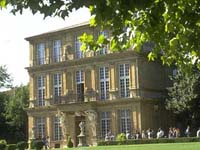
Aix-en-Provence
Aix-en-Provence is the cultural and touristic capital of Provence. This beautiful university town has been an inspiration to many great writers and painters, most famously Paul Cé…
Aix-en-Provence
Aix-en-Provence is the cultural and touristic capital of Provence. This beautiful university town has been an inspiration to many great writers and painters, most famously Paul Cézanne, who was inspired by the Provence countryside to produce his masterpieces, some of which can be seen in his hometown at the Musée Granet, in the Quartier Mazarin.
Aix possesses a wealth of superb architecture that has been carefully preserved and restored. Walking through the Cours Mirabeau and the Rue Gaston de Saporta, visitors can admire the famous fountains, and the private mansions with their sculpted doors, windows, and intricate ironwork on the balconies. On the Place des Martyrs de la Résistance is the ancient Cathedral and in the neighbouring archbishop's palace is the Musée des Tapisseries. A great way to see the city and surrounding countryside is by renting a bicycle.
Shopping is one of the main reasons that tourists flock to Aix-en-Provence. There is a large market every Saturday on Avenue du Cap-Pinede, and smaller ones on Tuesdays and Thursdays. The town centre is quite compact and each square seems to have its own bazaar. There is the flower market at the Place de l'Hotel de Ville, and vegetable and fruit stalls at the nearby Marche des Capucins.
There are many bars and pubs to choose from in town, and a large student population ensures that the nightlife is always lively. Aix-en-Provence has a thriving jazz scene centred on the Hot Brass Jazz Club and the Scat Club.



